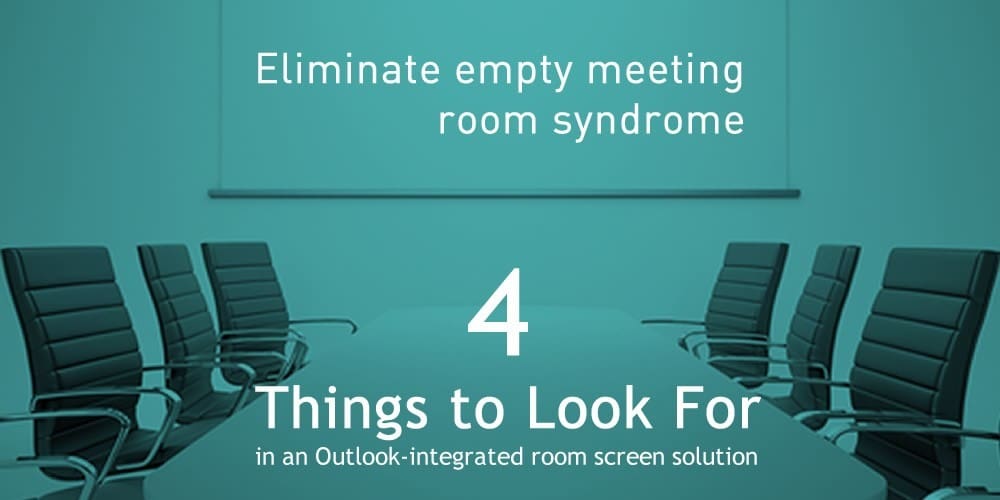Digital Signage
4 Things to Look for in a Room Screen Solution
STOP PRESS: COVID-19 means that contactless operation for your room booking service across all functionality outlined in this article is now VITAL.
It’s an all-too-common problem:
You try to book a meeting room in Outlook calendar and there’s nothing available. Then, on the day you needed the resource, you find yourself walking past corridors of empty meeting rooms.
Why does this happen? Who are these wasteful people? How can we stop this?
It doesn’t help that Outlook calendar makes it easy to book recurring meetings, and people simply forget to cancel a meeting, or perhaps they are off ill. But that’s a huge expense you could do without.
Implemented correctly, Outlook-integrated room screens can help you get maximum room utilisation at all times and put an end to bad room-booking etiquette.
Here’s 4 essential room screen features that you should look for to achieve the best results:
- Check-In with Auto-Release – This is the ability to set up an on-screen room check-in function that works to a pre-defined time window. The idea is that if no-one shows up within, say, 10 minutes after the meeting was due to start, the room is automatically released to be used by someone else.
- Check-In with Authentication – This is a next step on from above, where basically you capture the ID* of the person that booked the room as they arrive. It stops the scenario where just anyone could press a check-in button. It also gives you a very accurate fix on who is consistently wasting rooms, so that you can do something about it. *Ideally you need an authentication mechanism that ties in with your AD system and lets you use an existing ID card, a short PIN number or confirmation via a mobile device.
- Auto-Blocking – Imagine someone defaults on a room booking 3 times in a row (or whatever number you want). We can now register this fact and automatically cancel his or her subsequent bookings for the same room. Admittedly, this action might be considered extreme – you might just want to flag repeat offenders so they can be tackled differently – but being proactive about repeat offenders could save you thousands of meeting room hours per month.
- At-a-glance Availability Status – Importantly, if a room is released, the room screen itself should show ‘at a glance’ that it’s free to be re-booked. For example, staff should be able to see a ‘glowing green’ status light from the end of a corridor or see free rooms on a overview screen in reception. They should also see clearly when the room is scheduled to be used next, so they know they’ll have enough time for their meeting.
There’s lots of other things you should look for when selecting a room screen that will save money and help staff get the most out of available facilities, but simply by releasing rooms when the organiser doesn’t show up on time is a great start.
This functionality alone is enabling an international aerospace giant to release 3,300 hours of meeting room capacity each month.
Another key thing you need to know is that although room screens look very slick – they aren’t an extravagance – especially when you realise how much they can save your company. For example, our solution lets you use just one screen to represent multiple rooms – so you don’t have to have a screen per room.
Room Screen Solution
Start managing your meeting room & desk bookings more effectively with the only solution built on your Exchange & Office 365 infrastructure.














